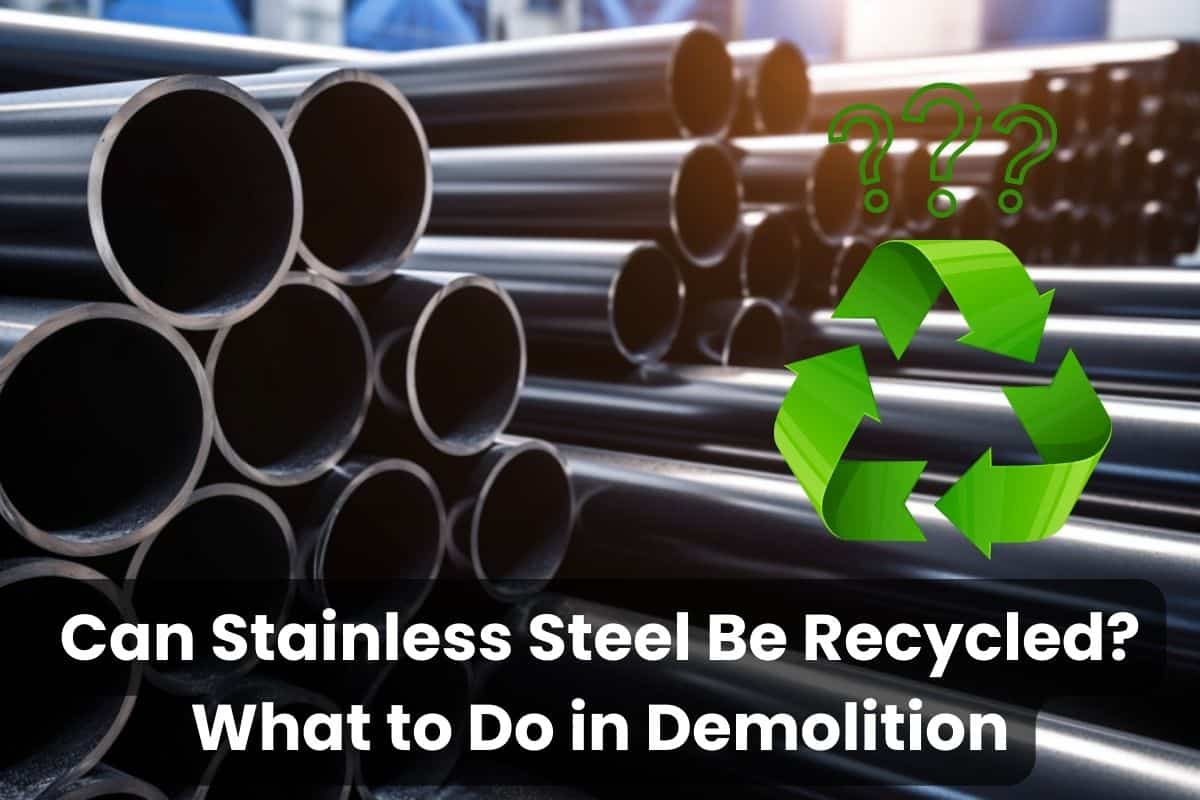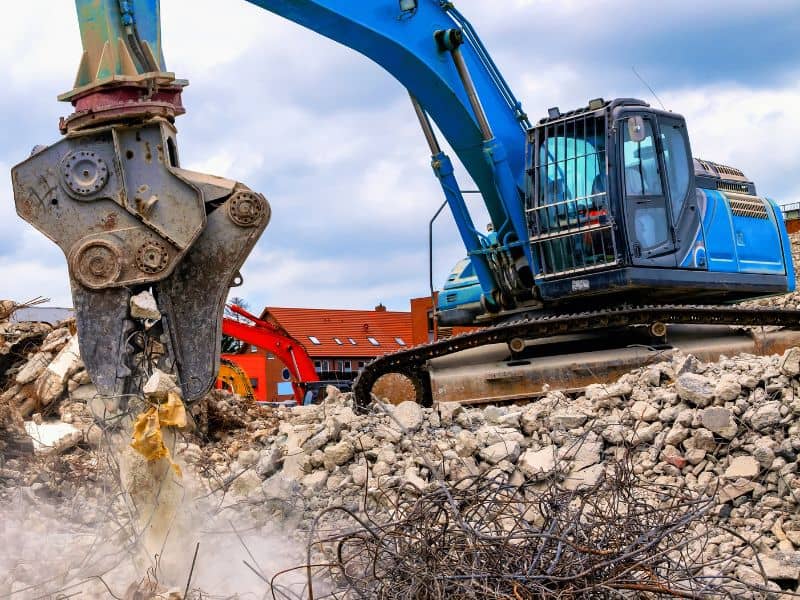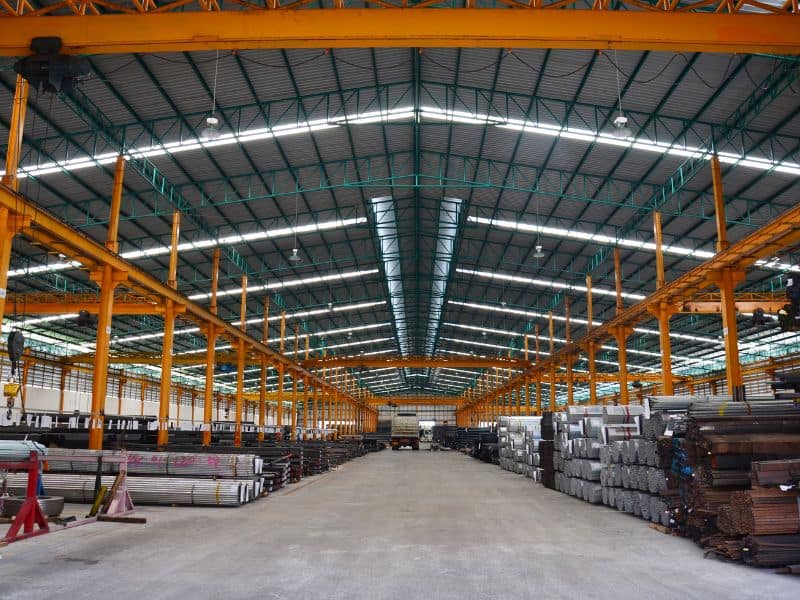Can Stainless Steel Be Recycled? What to Do in Demolition

According to Connecticut’s Department of Energy and Environmental Protection, steel is among the main components of construction and demolition waste that gets into landfills.
We can change this situation and promote green building practices by recycling all steel from construction and demolition projects. However, can stainless steel be recycled?
Stainless steel can be recycled, and steel, in all its guises, is the most recycled metal globally. Over 85 percent of stainless steel is recyclable, including material from construction sites and home use.
The material’s high recyclability is due to the fact that it retains its properties even when recycled many times.
In the rest of this article, I’ll discuss the different things you can do to ensure steel can be recycled from construction and demolition sites. Recycling steel from these sources is an excellent way to promote sustainable construction. Keep reading!
Design for Deconstruction

According to the United States Environmental Protection Agency, Design for Deconstruction (DfD) entails designing and building houses to facilitate easy deconstruction and recovery of materials for recycling and reuse.
The DfD concept facilitates sustainable construction by considering all stages of a building’s life — from the beginning to its end of life.
While it may seem like a ‘topsy turvy’ technique, DfD is your go-to design if you want to recycle stainless steel from your demolition site. It ensures that all parts of the building containing steel are put together in a way that allows easy deconstruction and recycling, contributing to a circular economy.
Design for Deconstruction is a circular approach that reduces demand for raw materials and waste generation. Therefore, it’s an excellent way to ensure the recovery and recycling of more steel at the end of a building’s lifespan.
You can hire experienced steelwork contractors to help you with the Design for Deconstruction process. These contractors will design adaptable steel structures that are easy to demount during demolition to recover the materials.
Design for Demolition Tactics
Some tactics to use for your DfD building include:
- Standardizing connection details: Use steel frames with standard connections to enable easy assembly, disassembly, and recovery.
- Using prefabricated steel components: Prefabrication ensures the building is assembled faster with minimal waste. Moreover, prefabricated steel buildings easily disassemble, allowing the material to be recovered for other uses.
- Prioritize reusable materials: Don’t focus only on recyclable materials; incorporate reusable materials like copper and structural steel. This keeps materials in circulation.
- Material selection and marking: Mark all structural steel during construction. This makes it easy to identify and recover steel members for reuse or recycling during demolition. Alternatively, select separable stainless steel frames.
- Embrace reversible connections: DfD advocates for reversible connections over their permanent counterparts. Reversible connections use screws, bolts, and other fasteners that are easy to remove. Such connections make it easy to disassemble steel frames for reuse or recycling.
Separate and Sort Materials

Separation and sorting are essential for demolishing and recycling steel from buildings.
These two approaches segregate construction and demolition materials based on their properties. The main categories include metal, concrete, timber, plastic, and glass.
The first step in sorting is to identify the material and its components before separating them into various categories.
For instance, steel frame components like bolts, screws, and nuts should be separated from wooden and plastic materials for easy recycling.
Separating materials based on their properties helps reduce contamination. Therefore, it makes it easier to acquire recyclables like stainless steel.
A rule of thumb is to create designated points at the demolition or construction site for different types of waste. Clear signage at these designated collection points allows for easy identification.
Train Workers on Steel Recycling
It’s common for workers to mix construction and demolition waste for disposal without separating recyclables like steel from non-recyclables. This is due to insufficient knowledge of steel as a recyclable material.
Therefore, train your workers beforehand if you plan to reclaim and recycle steel from your demolition project.
When training workers, explain the importance of sorting waste and provide guidelines to make it easy for them to do so.
Moreover, the training should incorporate the different types of steel commonly used in construction. Talk about rebar and structural steel like beams and columns and how to handle them for safety.

Partner With Experienced Steel Recycling Facilities
Experienced steel recyclers have sufficient knowledge of construction and demolition to obtain steel for recycling safely and efficiently.
When looking for a steel recycling partner, choose one with advanced equipment to collect, sort, and process waste from construction and demolition sites.
Ensure your chosen partner adheres to the rules and regulations for stainless steel recycling. For instance, they must observe proper health and safety protocols and measures that facilitate environmental protection.
If you’re new to the steel recycling industry, the best way to choose an experienced steel recycling partner to aid in material recovery is by asking to see their permits and certifications.
Some essential certifications to look for include:
- Leadership in Energy and Environmental Design (LEED) (LEED v4)
- The Responsible Steel International Standard certification
- Resource Conservation and Recovery Act (RCRA) certification
Use Demolition Methods That Facilitate Recycling
Your approach to demolition determines the quality of recyclable materials you obtain and influences the cost and time taken for steel recovery from demolished buildings.
Demolition techniques like hand dismantling and selective demolition are often necessary for recyclable materials like steel. These methods will allow you to access steel parts without breaking them.
Although methods that facilitate recycling are time-consuming, they result in top-quality salvaged materials ideal for reuse or recycling.
Incorporate Safe Handling and Storage

Handling and storage affect the quality of steel scrap for recycling. Improper steel handling techniques expose it to dust, oil, and other contaminants.
Contaminated steel has low value and quality, making it unsuitable for recycling. As such, it must undergo further processing and cleaning, which is less efficient and consumes more resources like water and energy.
Safe handling and storage protocols will maintain the steel’s tip-top condition for efficient recycling.
Some safe handling and storage techniques for stainless steel include:
- Store recyclable steel under cover, away from the elements: Like any other metal, steel rusts when exposed to moisture and air. Therefore, if you intend to recycle your steel, store it in a dry place to prevent corrosion.
- Avoid sources of mill dirt: Fine particles from processes like carbon steel fabrication and fragments from other metals can contaminate your steel. Therefore, keep them away from recyclable steel to safeguard its quality.
- Store the material away from footpaths: Ensure the steel is not on the ground where people can step on it. Doing so prevents the tracking of mill dirt, oil, and other contaminants onto the steel.
So, Can Stainless Steel Be Recycled? – Our Conclusion
Now that you know stainless steel can be recycled, incorporate the above practices into your construction and demolition projects to salvage steel for recycling.
Recycled steel is a more eco-friendly material than virgin steel and preserves natural resources like iron ore and coal.
Recycling steel is also an efficient way to divert waste from landfills by minimizing construction and demolition waste.







